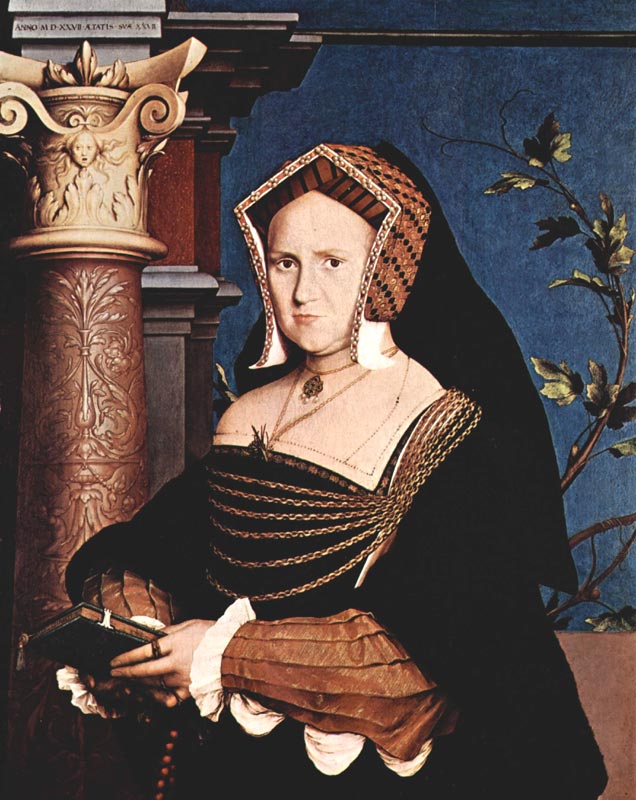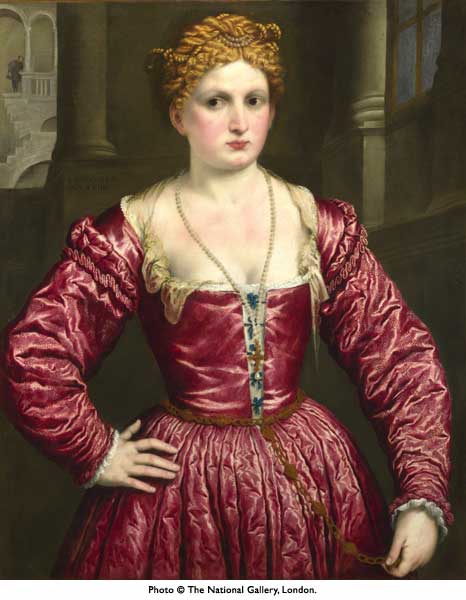

Lady Mary Guildford, Italian
Woman
Women's Garment Myths
Myth: Corsets aka "Pair of stays" or "pair of bodies" were always worn under English Renaissance court bodices, and were meant to make the waist small and push up the breasts.
The English did not wear corsets type garments until 1580s-90s (this is an area of contention). They are not tight-lacing as Victorian, but conform the body to ideal conical shape. No "tits on a platter" even for the larger woman.
A kirtle is worn under the gown we see above left. In the early Tudor era, the kirtle is one garment, bodice and skirt, either sewn together or held together by points (Cunnington, 53). Later Elizabethan a kirtle is the name for just the skirt.
Vasquines were possibly worn earlier in Tudor era. A vasquine is a stiffened bodice with attached skirt. The iron cage "corset" contraption also called a vasquine was not a normal article of clothing.
The image above right is of an Italian woman, as it is difficult to find images of women showing breasts in English portraits (so many are completely covered). Even Lady Mary Guildford doesn't show obvious cleavage, and she is a larger woman than most young ladies in portraits. Anyway, the Italian lady has breasts, but they are not pushed up high, and the cleavage is minimal. Instead the garment holds them in place.
Lady Mary Guildford by Hans Holbein the Younger, 1527.
Portrait of a Young Woman, by Paris Bordone, c. 1550. The National Gallery. Retrieved February 7, 2007 from the World Wide Web: http://www.nationalgallery.org.uk/cgi-bin/WebObjects.dll/CollectionPublisher.woa/wa/work?workNumber=ng674